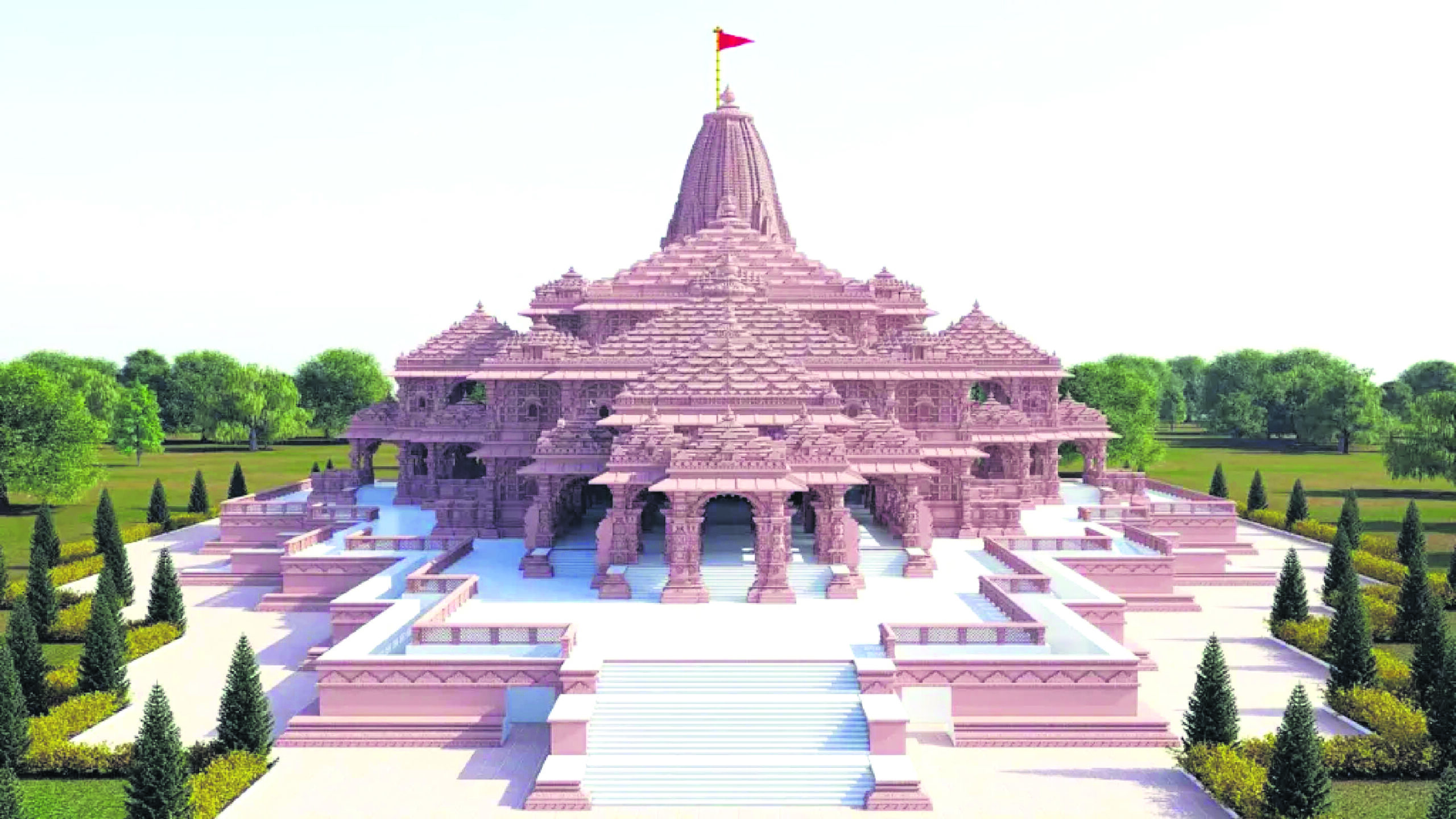


Narendra Modi recently visited Ayodhya. He inaugurated there- newly built Valmiki Airport and many infrastructural projects. He visited and supervised the works which are in progress in transforming Ayodhya and making it comfortable ad attractive site for the visitors of various parts of the country and the world. He also visited in a house of a labharthi(beneficiary) of Ram Dhani a labharthi of PM Awaas yojana in the city of Lord Ram. While visiting in the city of Lord Rama, also by going to the house of labharthi of a government schemes, he showed his multi sided politics of massaging that contains-symbolic as well substantial.
While approaching the memory of Lord Rama, by interacting with a labharthi, he showed his range of symbolic politics. He tried to show his concern for both-dignity of the memories of the god (Narayan) and Nar(poor human) same time.
Any political message emerges as symbolic message when it appears around icon like Maryada Purushottam Ram but if some delivers the promises of building Ram Janam Bhoomi temple through long process of struggle, it transforms this symbolic as substantial. Here symbolic and substantial are not in versus but functions with each other. PM Modi role in resolving the conflict around Ram Janam Bhoomi issue and facilitating the construction of Ram Janam Bhoomi temple in Ayodhya gives him access in the symbolic domain related with image, icon and symbol of Rama. It gives him edge on other leaders and competing political parties.
When the promises of Bhartiya Janata Party to make the temple on the place of the birth of Raja Ram get realised, then this symbolic politics gets substantial form and started building up trust capital for PM Narendra Modi and BJP. Here symbolic and substantial both are mixed with each other.
The same day PM Modi visited at the house of Ramdhani of the Ayodhya who is beneficiary of PM Aawas yojana. Why he did it and what it means politically? If someone analyses politics deeply may understand the hidden message of PM Modi visit to Ram Nagari Ayodhya just before inauguration of Ram Janam Bhoomi temple and in the same visit he went to the house of Ramdhani, a beneficiary of Pradhan mantri awas yojana. In fact, by doing these two acts together, he tried to bring together the religious -cultural meaning weaved in the construction of Ram Janam Bhoomi temple with the entire frame of developmental meaning lies in various social support schemes that are being implemented by BJP under the leadership of PM Narendra Modi.
He himself tried to explain this act in a public rally in Ayodhya on same day, saying that ‘we need to bring development and dignity of heritage together.’ He further said that without bringing them together country like India can’t develop with confidence and speed.
One may find interesting balance between the culture and economy in BJP political and its developmental vision and action. Here construction of Ram Janam Bhoomi temple may be considered as religious-cultural act and entire beneficiary frame of developmental governance of BJP may be perceived as economic act. I would like to borrow from famous British Marxist historian E.P. Thompson who used to say–with culture, no economic and no economics, no history.
With perceiving culture and economy two different domain, we need to understand the economics of religion and culture here. Ram Janam Bhoomi temple centred Ayodhya may also emerge as attractive site for the visitors of the world who will contribute in strengthening tourism-based economy of the Uttar Pradesh as state and India as country.
The way Kashi has been reshaped by the vision of PM Narendra Modi and emerged as big attraction among tourist of the world, people hopes that Ayodhya will be also able to give bog boost to the tourist economy of the country.
In fact, Neo-liberal time which emerged from the womb of neo-liberal economy is the time of movement and mobility. It speeds up the desires to move, mobile and visit to the tourist places among youths, women and middle and upper class.
PM Narendra Modi-led BJP understood this shift in desire among common people and observed a fast expansion of the circle of middle class. To understand these new shifts of neo-liberal time, BJP started exploring the possibilities of Indian heritage, cultural and religious sites as centres of tourist attraction. That is why they are trying to multiply the religious, cultural impacts of their Teerthas, mathas and places of religious cultural importance by constant touristic plannings and providing bhavyata(glory) and divyata(divinity) to their religious tirthas such as Kashi, Ayodhya, Mathura, Vrindavan etc.
The cultural economy based developmental model is being promoted by BJP under the leadership of PM Modi to achieve the mission of three trillion economy and goal of vikasit Bharat@2047.
So PM Modi wants to give multiple messages from Ayodhya– those are religious, cultural and developmental too. As we know he uses each and every moment to give certain massage to achieve certain aims and goals that may be either political or developmental.
We need to see what massage he is going to give to the people of India and Hindus of the world on 22nd January, 2024 on the day of inauguration of Ram Janam Bhoomi temple in Ayodhya.